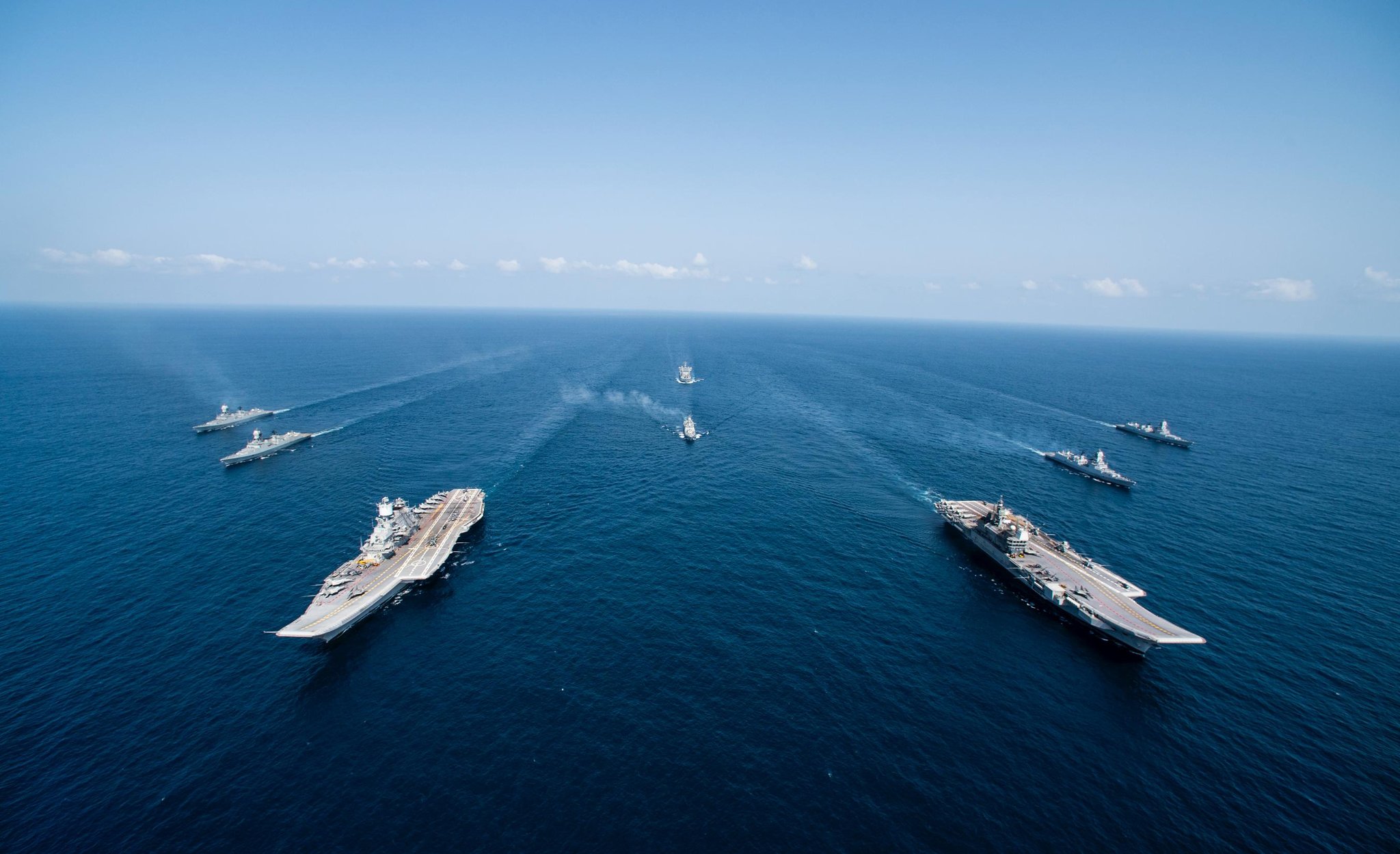Operation Sindoor spotlighted the Indian Navy’s pivotal role in modern strategic deterrence, decisively demonstrating India’s evolving military prowess and tactical sophistication. Within hours following the terror attack at Pahalgam, the Indian Navy swiftly assembled and deployed a formidable maritime task force, strategically positioned in international waters south of Karachi, effectively compelling Pakistan into operational paralysis without firing a single offensive shot.
The concept of naval power as a tool of “compellence”—using force projection to shape adversary behaviour without engaging in direct combat—was masterfully exemplified during Operation Sindoor. This doctrine traces its intellectual heritage back to Admiral Sergey Gorshkov of the Soviet Navy, who emphasised naval power’s capacity to achieve political objectives through strategic positioning and demonstrative actions rather than outright warfare. In contemporary practice, the Indian Navy has adeptly embraced and applied this principle, enhancing its strategic leverage significantly.
India’s comprehensive maritime strategy, articulated in the 2015 naval doctrine, provided a robust foundation for the tactical deployment during Operation Sindoor. Central to this strategy is the Navy’s ability to strike targets deep within adversarial territory using long-range precision-guided munitions while simultaneously safeguarding its fleet through multi-layered air and maritime defences. The capabilities showcased during this operation—ranging from intelligence acquisition through advanced maritime domain awareness (MDA) frameworks to executing complex manoeuvres and maintaining prolonged force posture—reflect India’s substantial advancement in naval warfare technologies and doctrines.
Crucially, Operation Sindoor highlighted Pakistan’s maritime vulnerabilities, particularly along its economically critical coastal infrastructure. Pakistan’s coastline, stretching roughly 1,000 kilometres predominantly along the troubled region of Balochistan, hosts critical maritime nodes such as Karachi, Port Qasim, and Gwadar. Recognising that disruption of shipping lanes could significantly cripple Pakistan economically and operationally, the Indian Navy’s strategic positioning during Operation Sindoor exerted potent economic and psychological pressures without breaching international maritime norms.
Moreover, India’s naval superiority has historically been a defining factor in Indo-Pakistan conflicts, most notably during the 1971 war. The Indian Navy, through strategic maritime strikes and effective naval blockade tactics, had incapacitated Pakistan’s naval operations then, leaving a lasting psychological impact. Operation Sindoor echoes this historical precedent, reaffirming India’s maritime dominance through a display of strategic restraint combined with decisive readiness.
The modern Indian Navy, now possessing enhanced maritime domain awareness capabilities through the integration of satellite surveillance, UAV reconnaissance, coastal radar networks, and a real-time information fusion centre, has significantly raised the bar for naval operational standards. This capability gap became starkly evident during Operation Sindoor, as the Pakistan Navy, lacking similar technological infrastructure, was effectively contained without any direct military confrontation.
Deploying a task force spearheaded by the aircraft carrier INS Vikrant, supported by destroyers, frigates, and submarines, the Indian Navy projected overwhelming maritime power strategically poised within striking range. This fleet conducted live missile firing exercises, a deliberate demonstration of precision, readiness, and operational agility, sending a clear message to the adversary about India’s immediate readiness for any eventualities.
Operation Sindoor thus became a textbook case of achieving strategic objectives through naval compellence—coercing without kinetic engagement, containing without confrontation. The Indian Navy’s ability to swiftly mobilise, maintain a protracted operational posture, and psychologically dominate an adversary highlights its growing sophistication and maturity as a formidable maritime force.
In conclusion, the Indian Navy, aptly known as the “Silent Service,” successfully leveraged its enhanced maritime capabilities to deliver a strategic victory in Operation Sindoor. By compelling Pakistan’s naval forces into strategic immobility, the Navy reaffirmed its critical role in India’s comprehensive defence strategy, projecting power without resorting to aggression, and setting a new benchmark for maritime strategic deterrence in the region.
